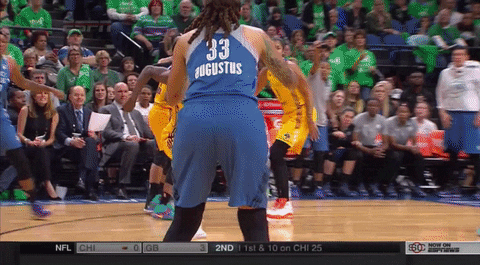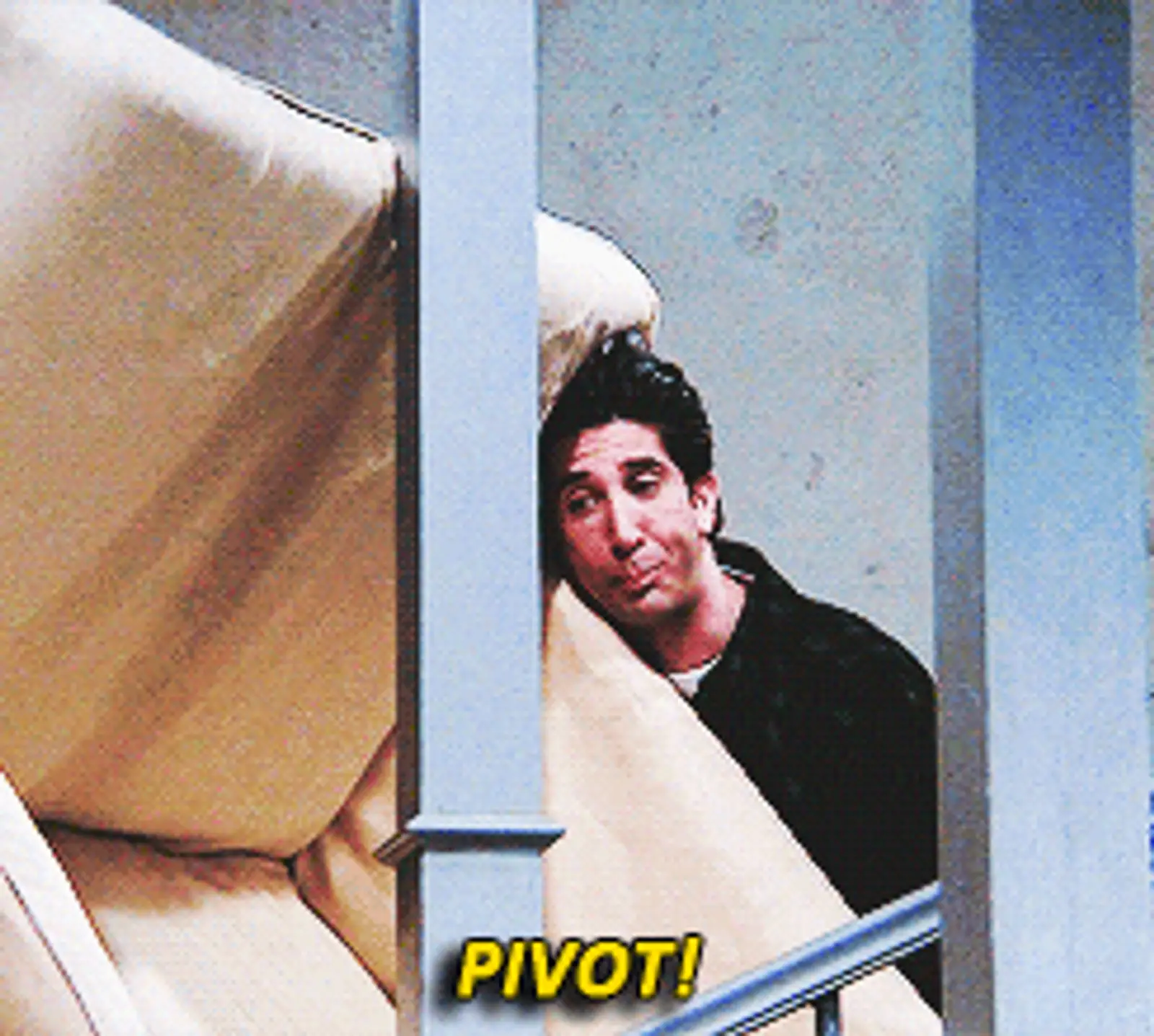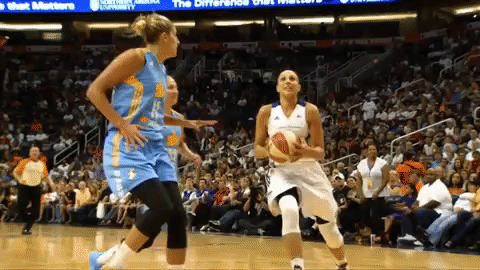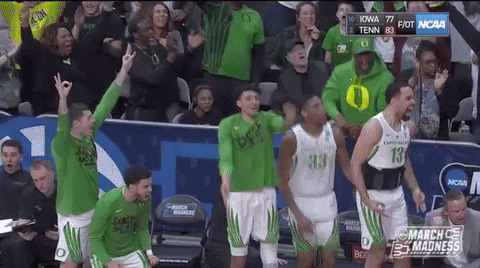Basketball Glossary

Dribble
Literally just bouncing the basketball up and down consecutively.
Travel
Called by the referees when a player takes steps without dribbling the basketball (unless they're on their way to a basket/making a shot). If a player stops dribbling, they have to plant their feet and find somebody to pass to. Keep that ball moving!
Double dribble
This is what happens if a player stops dribbling...and then starts dribbling again. Not allowed.
Pivot
You know how you can’t travel with the ball? Loophole: you can still move around by keeping one foot planted and pivoting around with the other one.

Lay up
When a player runs towards the basket and floats the ball either directly into the net or off the backboard and in. Players attempting this shot can take three steps without getting called for a travel.
Slam dunk
The ultimate highlight-reel move. Players with hops (or who are just really tall, like Shaquille O'Neil) get their hand(s) and the ball above the basket and slam it into the hoop. It's the mic drop of the NBA and is oh-so-satisfying to watch.
Three pointer
When you nail your shot from beyond the three-point line, also known as the arc, and pick up three points for your team instead of two. It scores more points because it’s further from the basket and therefore harder to make.
Field goal
Any shot that isn’t a free throw. Includes three pointers, layups, jump shots, slam dunks…you get the picture.
Bank shot
A shot that hits the backboard before the rim/net.
Jump shot / J / Jumper
Refers to jumping and then shooting the ball while still in mid-air. The late Kobe Bryant was known for this one.
Alley-oop
When one player passes the ball close to the basket so the other player can grab it and (generally) slam dunk it into the net. Check it out here. Teamwork makes the dream work.
Free throw line
When a player is fouled while taking a shot, they head to the line to have a chance to score uncontested. Usually, the player takes two shots, sometimes three if they were in the midst of a three-pointer. You might think these are easy shots, but sometimes the player cracks under the pressure of being the center of attention. Or...they're just bad free throws.
Double-double
When one player completes two of the following: scores 10 or more points / has 10 or more rebounds / 10 or more assists / 10 or more steals or 10 or more blocks. The most common is points, rebounds and assists.
Triple-double
Same as the above (scores 10 or more points / has 10 or more rebounds / 10 or more assists / 10 or more steals or 10 or more blocks) but one player completes three of those stat lines. This is next-level talent.
Rebound
When a player shoots but misses off the rim or backboard, so the ball bounces back into play. The player who gets to count the rebound as a statistic is the one who gets the ball after it’s shot. Most of the time, the defensive team collects the rebound; however, an offensive rebound can occur as well and the team gets another chance to score.
Shot clock
In the NBA, once you inbound the basketball, you only have 24 seconds to shoot. The shot clock was implemented so that players don’t meander around to keep possession. It forces the game to keep moving and be more exciting.
Crossover
You are dribbling the ball and switch quickly from one hand to the other to try to fake-out the defensive player.
Pick/screen
A lot of the time, you need to make some room on the court so that your teammates can make a play. A pick/screen is when you block a player on defense from getting in the way of one of your teammates. You do this by planting your feet and standing your ground so that your teammate can run past you. But you must keep your feet firm and planted. Like bumper cars but with a bit more purpose.
Pick and roll
Same as above but after you set your screen, you roll away and receive a pass. Tricky, tricky!
Over and back
Occurs when a team crosses half court and then goes back. This is not allowed, so when it happens, the team that made the cross-over loses possession.
Full court press
Defense mechanism. The defensive team applies the pressure over the entire court (rather than just waiting on the other side of half) before and after inbounding the ball. You’ll generally only see this happen in the pro leagues at the end of each half if a team is down because it’s terribly tiring.
(Wo)man to (wo)man
Another defence mechanism. You have one ‘check’ (player) on the other team that is your mark and it's your job to defnd them. Think sports version of a stage five clinger.
Zone defense
Opposite defense strategy as (wo)man to (wo)man. The squad doesn’t have a person to follow but a zone (area) on the court to defend and cover whoever enters that zone.
Technical / Technical foul / T
Any foul that does not involve physical contact. The refs get super into this one and make an aggressive T shape out of their hands. Common example? A player/coach is getting too fired up and starts swearing/yelling at the refs.
Courtside
The seats literally on the court where all of the biggest celebs get to watch the game. Throwback to Jay Z’s Empire State of Mind: “Sitting Courtside, Knicks and Nets give me high fives.”
March Madness
The annual single-elimination NCAA Division I men's and women's college basketball tournament where 68 teams (64 for the women) compete for the national championship title. The tournament gets its "madness" nickname thanks to the history of major upsets in March. Intrigued? Learn more with our complete guide to March Madness.
Enjoying this article? Want more?
Sign up for The GIST and receive the latest sports news straight to your inbox three times a week.



